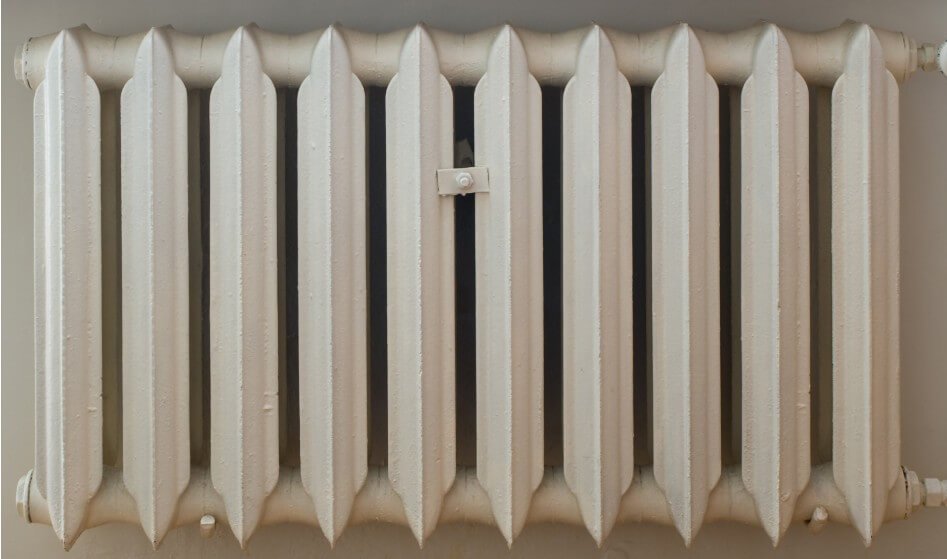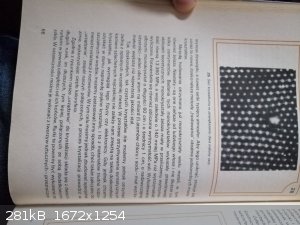oberkarteufel
Harmless

Posts: 47
Registered: 11-12-2018
Member Is Offline
Mood: Mayonesium sulfate
|
|
DIY homemade hydrothermal crystallization device
"O szlachetnych kryształach" ("On the precious crystals") Krzysztof Błaszkowski, Warsaw 1987, ISBN 83-10-08870-1
A nice, even if now a bit outdated, book for science enthusiasts that touches on the importance of crystals in the industry and methods of
crystallization. Let it speak for itself about DIY homemade hydrothermal crystallization apparatus:
| Quote: |
(...) However, if we want to get really beautiful crystals at home, and made of substances difficult to dissolve in water at that, we can use another
method (...) For this, however, we need to build a special "device" - a set of communicating vessels and the crystallization process should be carried
out during winter, utilizing the heat of the radiator(*1).
As shown in the figure, our crystallization "device" consists of two long tubes, the longer, the better, connected with each other by additional tubes
at some distance from their ends. These tubes should be made of glass. As a last resort, they can be made of plastics – transparent polymethyl
methacrylate (PMMA), that is, made of organic glass or plexiglass, or made of transparent polyethylene (PE). Glass or plastic tees and flexible pipes
made of heat-resistant plastics can be used at horizontal connections. However, it is best to make them of glass by hot fusion(*2). We hang the entire
structure so one of the tubes is close to, and the other is as far as possible from the radiator. Of course, instead of a radiator we can use a
different kind of heat source, however, it requires constant monitoring over an often very long time, necessary for the growth of large single
crystals.
The distance between the vertical tubes should be at least 30 cm. Vertical pipe diameters, or at least the tube that is away from the radiator, should
be as large as possible. On this, among other factors, depends how big of a crystal we can grow. In a vertical tube next to the radiator, in the
warmest place, so at the level of the top of the radiator, on plastic nets with big holes, we put pieces of substance we want the crystals of. As a
last resort, we can put them in mesh plastic bags suspended on threads attached to the top edge of the tube. We pour the distilled water(*3) into the
set of communicating vessels to the level above the upper connection of the tubes. In the second tube, approximately on the same height as the
material in the tube closer to the radiator, we hang a crystal seed on a silk or nylon thread(*4). We pour a few drops of oil(*5) on the water surface
in both vertical tubes, so we can avoid the water evaporation and the dust getting in, and then we close the tubes with plugs made of porous
material. All that's left is to do is to wait again. The longer, the better.
This method of crystallization is referred to as hydrothermal crystallization. Hydro from the water, and thermal, because it uses elevated
temperature, although in our case the temperature is not too high. The physical phenomenon is easy to explain. The water heats up near the radiator,
which is accompanied by increased solubility of the crystallized substance. The increase in temperature is accompanied by an increase in the volume of
the liquid (thermal expansion), the liquid becomes lighter and rises, and in its place, a cooler water flows in through the lower connection from the
pipe further away from the radiator. Water begins to circulate, and heated in one tube, after passing through the upper connection to the other, it
releases excess heat to the environment, cools down, as the temperature drops, the solubility decreases, and the excess substance separated from the
solution is deposited on the growing crystal.
Beautiful and large salt(*6) crystals can be obtained with this method, and even crystals of substances sparingly soluble in water. In the same way,
quartz crystals are formed in nature, emeralds, aquamarines, etc... (...) Synthetic quartz crystals and synthetic emeralds are also made in the same
way. However, nature has a lot of time. Each crystal can grow hundreds, and even thousands of years. We people are always in a hurry, so instead of
waiting calmly, we synthesize emerald crystals in devices similar to the one described, but at a higher temperature and pressure. This is the story
for another chapter, however. Instead of this, one last piece of information. Often very large single crystals are obtained by crystallization from
aqueous solutions - even above 20 kg. Let this be an encouragement for your own experiments and the construction of crystallization devices other than
the one described.
|
*1 - the author has in mind the type of radiator that used to be very popular at the time in the countries of the Eastern Bloc - made of cast iron,
modular radiator. The heat was often provided by communal boilers (or combined heat and power plants) and the characteristic of this system is that
the heat (through hot medium) is provided constantly - optimal for crystal growing. /This is exactly what makes this easy method unavailable for me -
my heat system works in cycles, less often heating than not./

*2 - originally a word is used that directly translates to "hot soldering/brazing" but to avoid confusion that the glass pieces are joined with metal
solder I'm changing it to fusion.
*3 - it may be interesting to use the solutions of other substances to solubilize the one we want to crystallize. IIRC, CaSO4 is better soluble in
sucrose solution than in pure water. Changing the form of crystals due to additives in solution is also an interesting variable to try.
*4 - silk and nylon are probably mentioned instead of cotton, because their fibers are "smoother" and it should help avoid the growth of parasitic
crystals on the thread.
*5 - originally the word is used that currently denotes almost exclusively an "olive oil", but a few decades prior it also meant "any oil" (and
especially "machine oil" in technical contexts). Regarding the goal, the use of a paraffin oil should be optimal.
*6 - NaCl most probably.
  
|
|
|
Mateo_swe
National Hazard
   
Posts: 505
Registered: 24-8-2019
Location: Within EU
Member Is Offline
|
|
Intresting to see if you can make this work, please post any results.
|
|
|
blogfast25
International Hazard
    
Posts: 10562
Registered: 3-2-2008
Location: Neverland
Member Is Offline
Mood: No Mood
|
|
| Quote: |
*6 - NaCl most probably.
|
NaCl has a very flat solubility/temperature profile.
Large crystals are probably made by controlled evaporation of saturated solutions.
[Edited on 9-2-2023 by blogfast25]
|
|
|
oberkarteufel
Harmless

Posts: 47
Registered: 11-12-2018
Member Is Offline
Mood: Mayonesium sulfate
|
|
@Mateo_swe - thanks for the encouragement, but as I noted in the first post - my heating system doesn't provide constant flow of heat that is probably
necessary to make this work properly. I suspect that cycles not heating-not heating-not heating-heating-not heating-not heating-heating might be
detrimental to the steady growth of crystals.
I may try to build something with electrical heating cable; however that would require some kind of regulation and I suck at electronics.
The original project has the upside that it can be left unattended for months without worrying about it. It also bears no additional cost, since it's
using the heat that one's using anyway, crystallization experiment or not.
@blogfast25 - That's true, there's just about 4% decrease of solubility by going down from 70 to 20 deg C. But what is lacking in single turnover's
efficiency is made up for by the increasing the number of turnovers, thanks to the continuity of the flow. That's the idea behind it - to create a
constant influx of supersaturated solution that comes into contact with the seed crystal. And even if only a tiny amount is deposited in the single
moment, we just need to wait longer. The patience is the limit. (And the duration of winter. And heating bills. But you get the idea.)
Also, that the X is a good way to achieve something, doesn't mean that Y cannot be a good way to do this.
Regards.
[Edited on 9-2-2023 by oberkarteufel]
|
|
|
Twospoons
International Hazard
    
Posts: 1282
Registered: 26-7-2004
Location: Middle Earth
Member Is Offline
Mood: A trace of hope...
|
|
I've used the hydrothermal method to rapidly grow CuSO4 crystals.
https://www.sciencemadness.org/whisper/viewthread.php?tid=78...
I used a coffee cup warmer as a heat source. OTC and cheap.
If you want to build your own simple heater, you might look at self-regulating heating cable - the type that's often used to stop pipes freezing. I
have some that you connect to mains voltage and it sits at 60C, no matter what.
[Edited on 9-2-2023 by Twospoons]
Helicopter: "helico" -> spiral, "pter" -> with wings
|
|
|
Admagistr
Hazard to Others
  
Posts: 350
Registered: 4-11-2021
Location: Central Europe
Member Is Offline
Mood: The dreaming alchemist
|
|
Hi,is there any other interesting experiment with crystal formation or related to crystallization described in the mentioned book?
|
|
|
Bedlasky
International Hazard
    
Posts: 1219
Registered: 15-4-2019
Location: Period 5, group 6
Member Is Offline
Mood: Volatile
|
|
Quote: Originally posted by blogfast25  |
Large crystals are probably made by controlled evaporation of saturated solutions.[Edited on 9-2-2023 by blogfast25] |
There is procedure where addition of FeCl3 helps to form nice cubic crystals of NaCl.
https://dmishin.github.io/crystals/sodium-chloride.html
[Edited on 10-2-2023 by Bedlasky]
|
|
|
blogfast25
International Hazard
    
Posts: 10562
Registered: 3-2-2008
Location: Neverland
Member Is Offline
Mood: No Mood
|
|
That's very interesting (and somewhat puzzling...) but several of these crystals are clearly infused with FeCl3, which rather defeats the
object of the exercise.
Thanks!
|
|
|
oberkarteufel
Harmless

Posts: 47
Registered: 11-12-2018
Member Is Offline
Mood: Mayonesium sulfate
|
|
@Twospoons - thanks for the info about those heating cables, I'll look it up.
@Admagistr - not really unfortunately, there's a description of a "classical" crystal growing from solutions, but it's very basic, the abovementioned
fragment serves like a kind "part two". Most of the stuff that is mentioned in the book was impossible to achieve at average Polish 80's home anyway,
so it's kinda unsurprising.
@Bedlasky, @blogfast25 - I know this method, the guy is even here at SM, can't remember his alias, though. I do remember however reading an old
article from JChemEduc that mentioned using Pb2+ ions as a dopant necessary to achieve satisfactory NaCl crystal growth.
Ah, found it - 10.1021/ed054p552.3
|
|
|
|